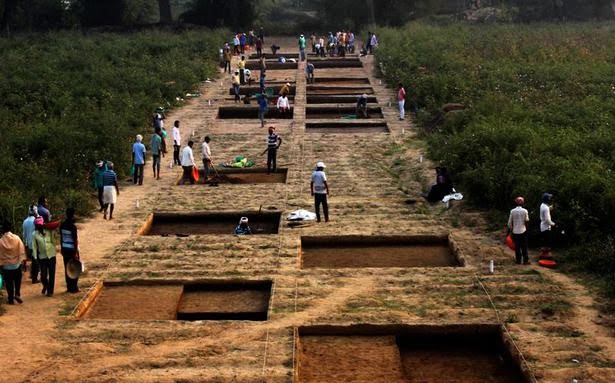Asurgarh In Odisha Dates Back To Iron Age, Older Than Sisupalgarh, Carbon Dating Finds

Bhubaneswar: An advanced radiocarbon dating technique has pushed back the period of the Asurgarh fort settlement in Odisha’s Kalahandi district to ninth century BC or the Iron Age, making it 2,500-2,600 years older than the Sisupalgarh fort and the state’s oldest fortified settlement.
Archaeologists, using the Accelerator Mass Spectrometry (AMS) radiocarbon technique, have established that the Asurgarh fort settlement spanned over three cultural phases from ninth century BC to third-fourth century AD.
Earlier believed to be of the Mauryan period, archaeologists said the Asurgarh fort settlement actually dates back to the Iron Age, making it older than the Sisupalgarh fort, which dates back to fifth-sixth century BC.
While human settlements began in Asurgarh around ninth century BC, iron tools are believed to have been developed by its people between fourth century BC and second century AD, coinciding with the Mauryan period.
The cultural period of the site is divided into three phases without any hiatus — Iron Age (ninth century BC to fourth century BC), Early Historic Period (second century BC to first century AD) and Late Period (second century AD to third-fourth century AD).
“People of that period had good knowledge of iron technology and use of iron implements. The iron materials found during excavation at Asurgarh site have not rusted yet as the ‘Fe’ content in them was extremely high,” archaeologist DB Gadanayak, posted at ASI’s Meerut Circle, told TNIE. Gadanayak had earlier carried out studies at Asurgarh during his stint with the ASI, Bhubaneswar.
A total of 417 antiquities have been excavated from the site. Beads of coral, lapis lazuli, carnelian, glass, jasper, garnet, shell, agate, milky quartz, terracotta, kaolin and soft stone.
“The fortified settlement was built in such a way that water came from a distance of more than five kilometres to enter the reservoir (Udaya Sagar) located in the eastern side of the fort, which shows the efficiency of the water management system during the early historic period. Asurgarh is the only site in Odisha which shows such highly skilled engineering of water management in comparison to contemporary sites,” Gadanayak told The Hindu.
Lokesh Durga, PhD scholar in the Department of History at Delhi University, told TNIE that the first urbanisation process in Odisha started from Asurgarh.
Earlier in 2019, silver coins, jewellery, precious beads and rare terracotta excavated from Asurgarh had pointed to human settlements there dating back to third century BC or the Mauryan and Kushan period.
Excavations at Asurgarh was first done by N K Sahu on behalf of the Postgraduate Department of History, Sambalpur University, in March 1973.
The site was declared protected under the Ancient Monuments and Archaeological Sites and Remains Act, 1958 in 1973. Asurgarh fort consists of a main fort and exterior fortification. The main fortification spreads over 12 hectares. The external fortification is now in ruins.

Comments are closed.